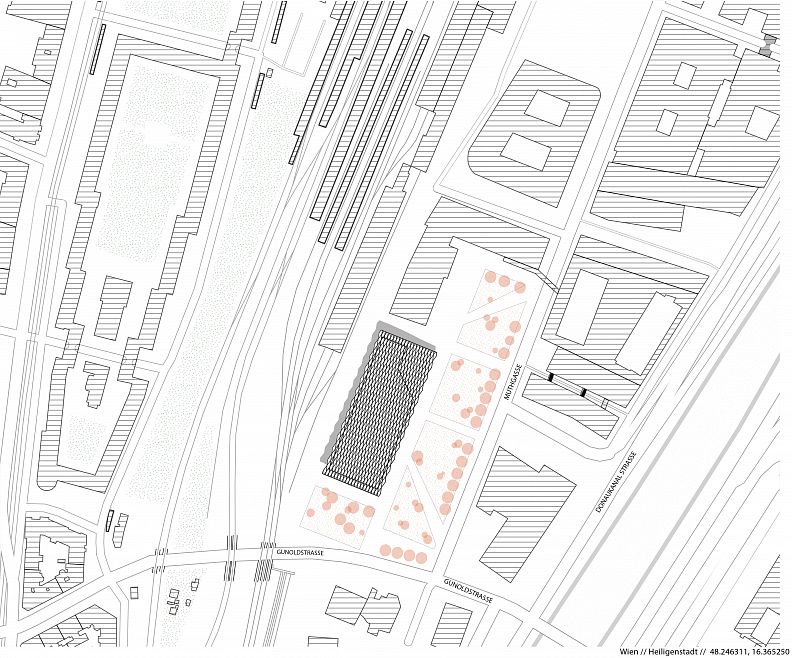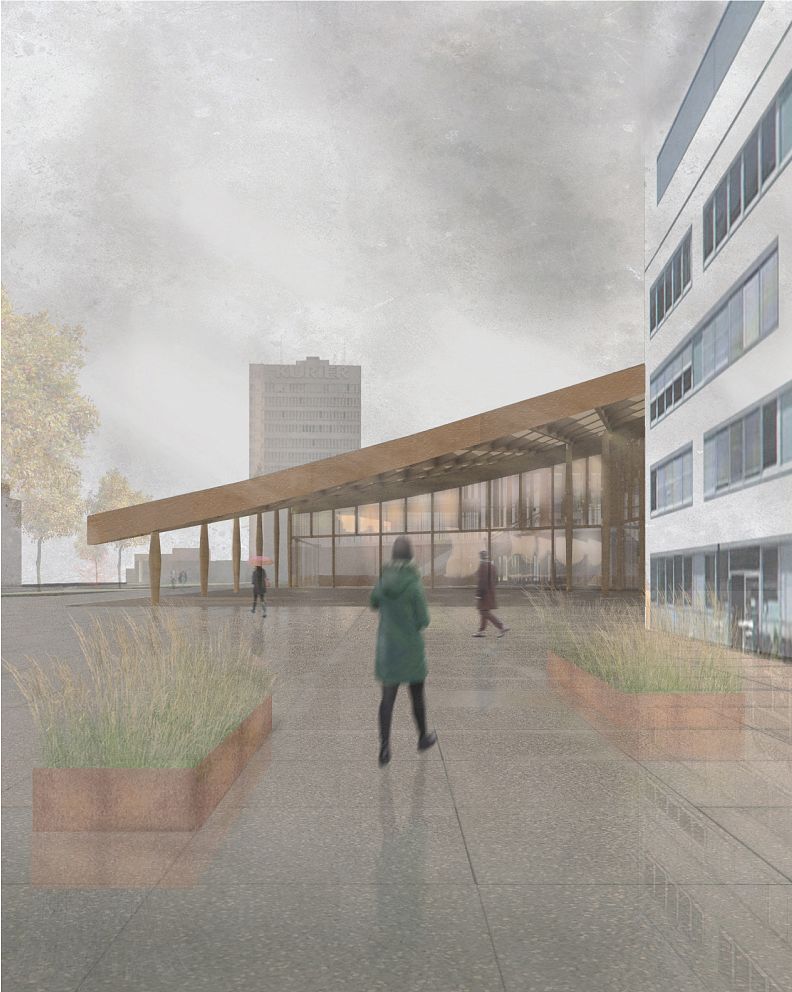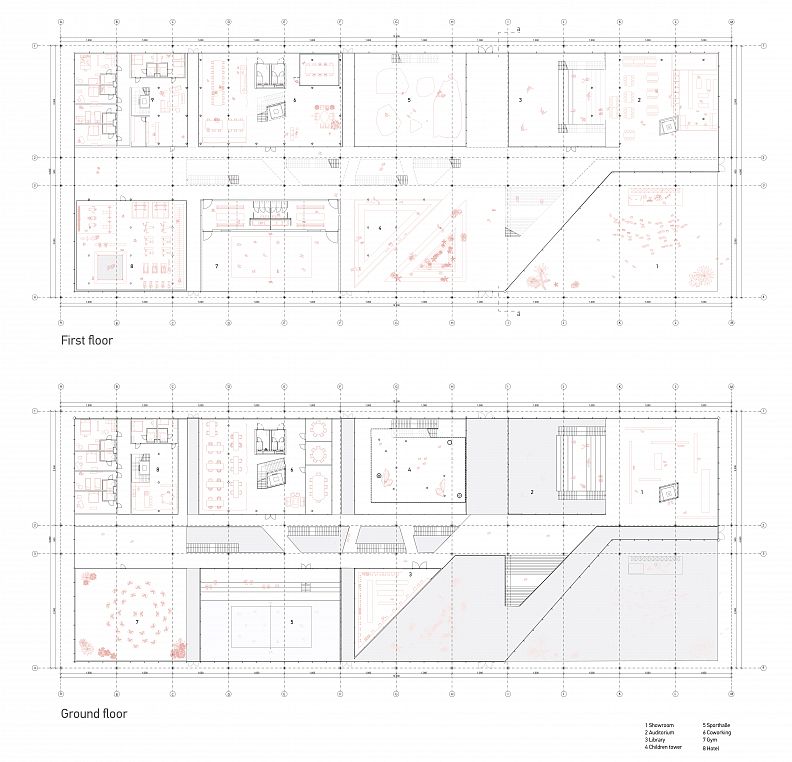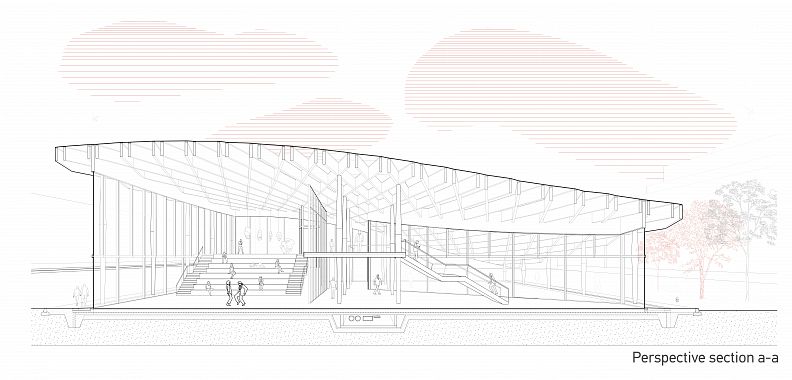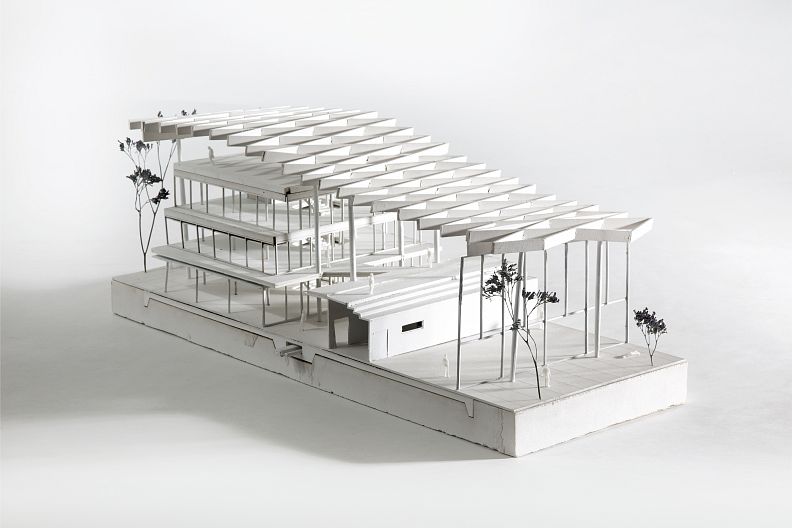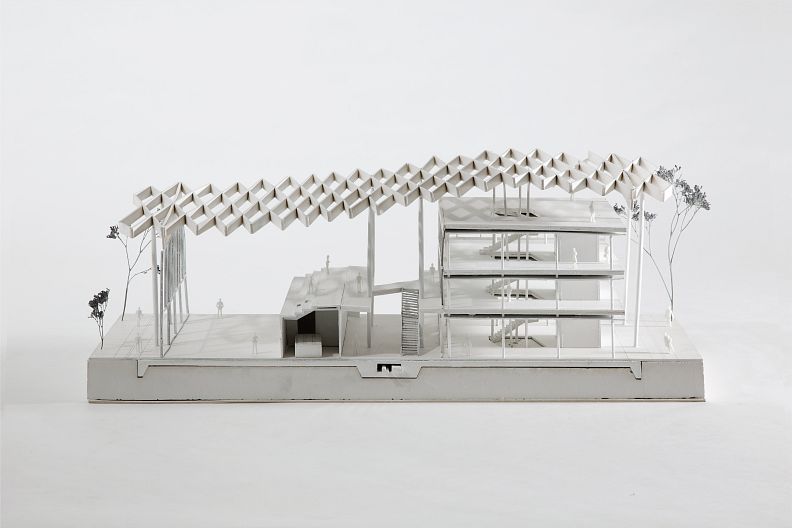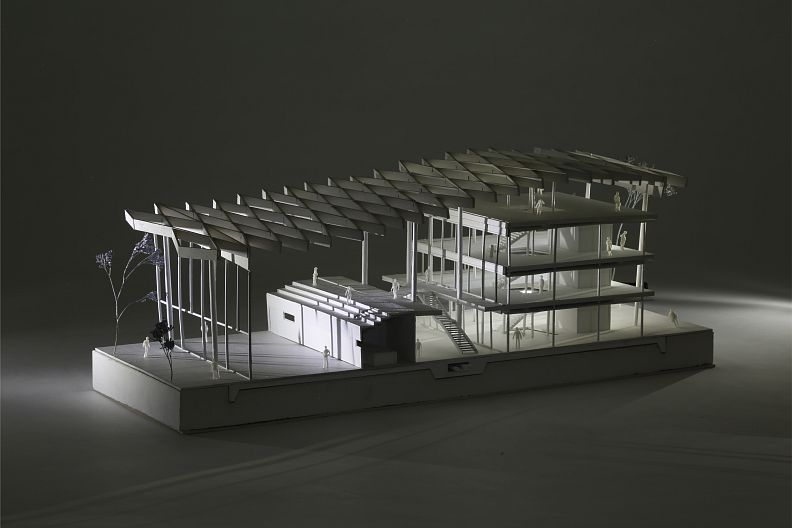Social Blender

Project idea
Dynamic cities live from social pluralism. In addition to the green space on offer and the housing and education standards, it is above all the process of community building in the neighborhoods that sustainably enriches urban coexistence.
While in Vienna it was once the 'houses of encounter', conceived as sites of partnership-based democracy, which were run as community centers at district level, today these only insufficiently reproduce social reality...
Project description
The public blender is a space for social interaction for people as different social classes, with different interests, all of whom are part of global society. Positioned on the outskirts of the city, the building should not only be functionally well planned, but also be an effective activator of the zone in which it is located. The passing train line next to the location and the height difference of the surrounding buildings led to the finding of form and the determination of lightness, dynamism and inclusiveness as the main features of the design. Derived from the urban movement axes, the building is planned so that it is not a barrier, but an air-conditioned section of the movement in the open space. The mixture of functions allows the building to function 24/7 and to become a new hot-spot for people not only from the neighborhood, but for every citizen and guest of the city. The building itself is built with a very high proportion of wood that remains largely uncovered to create a soft and warm atmosphere.
Technical information
The decision to use wooden materials was based on the idea to prolong the old building traditions in Austria, but in a totally modern way, where the building on its own is a showcase on the technological limits of the wood as a building material nowadays. The main columns, which carry the 120m long wooden paneled ceiling, have deliberately wider cross-section in the middle, in order to hold against the kink. On the other hand in order to achieve bigger sustainability apart from the use of wood, we achieved 70% natural ventilation inside of the building, through analyze and later incorporation of opening claps on the facade.
Co-authors
Pavlo Kukurudz
